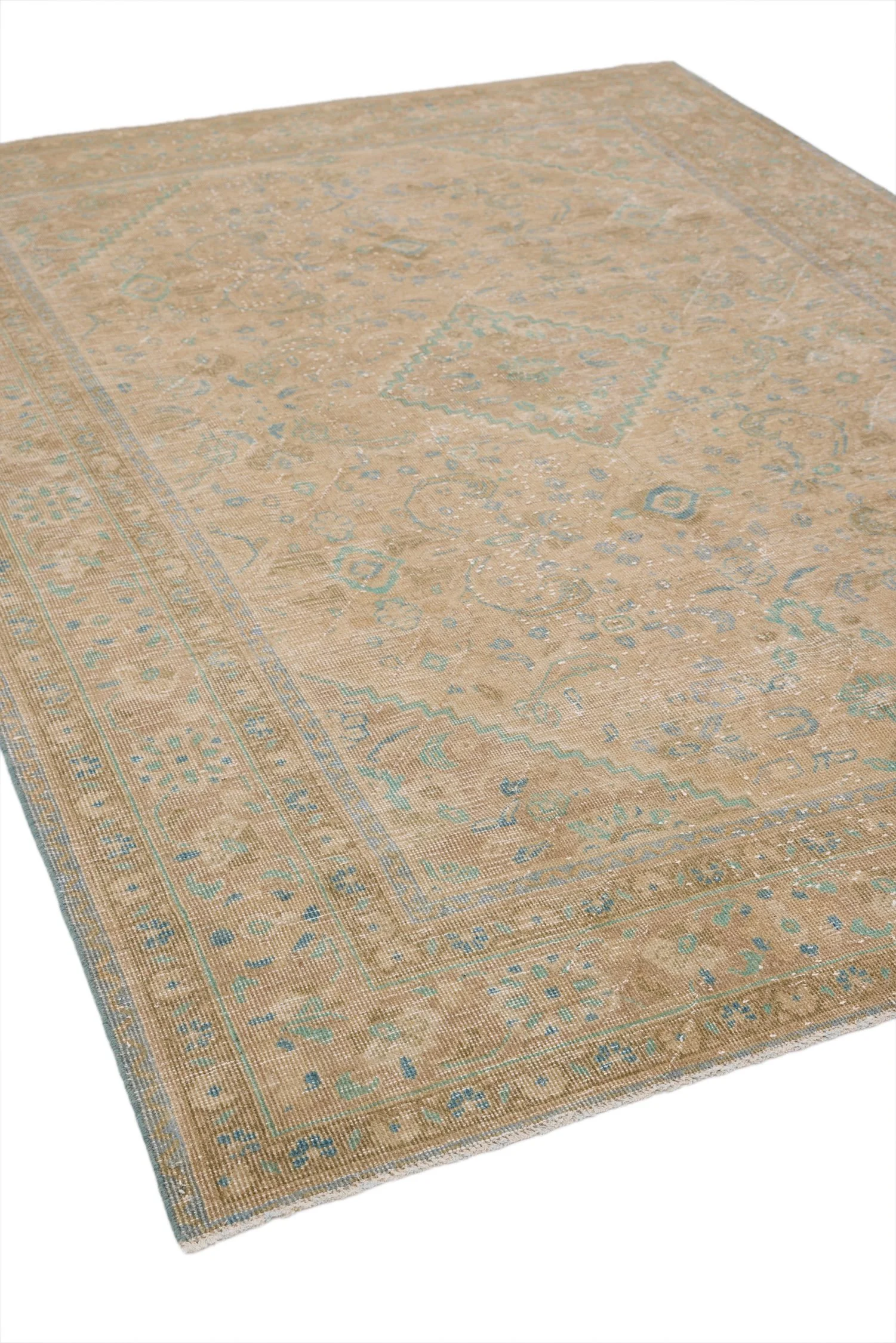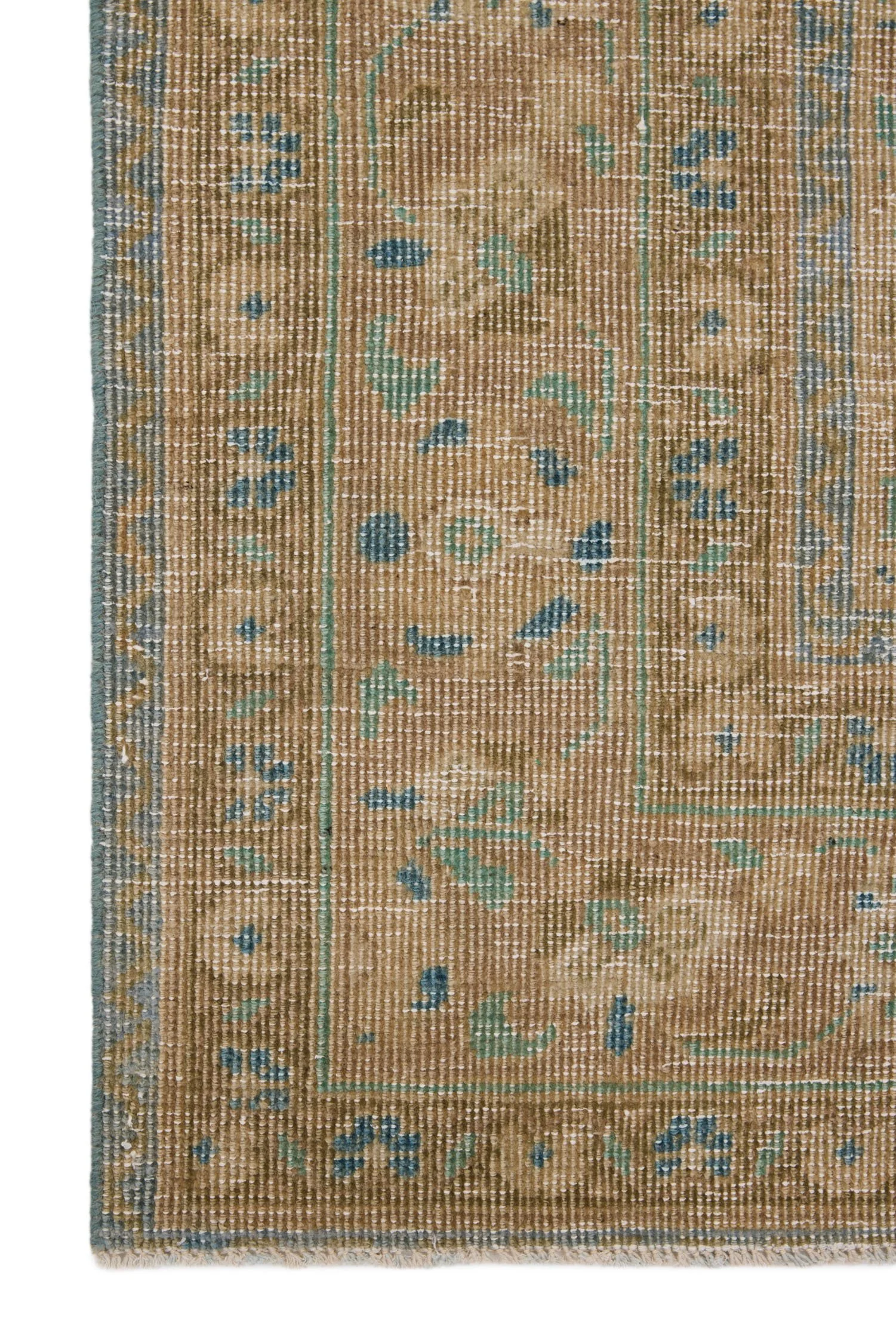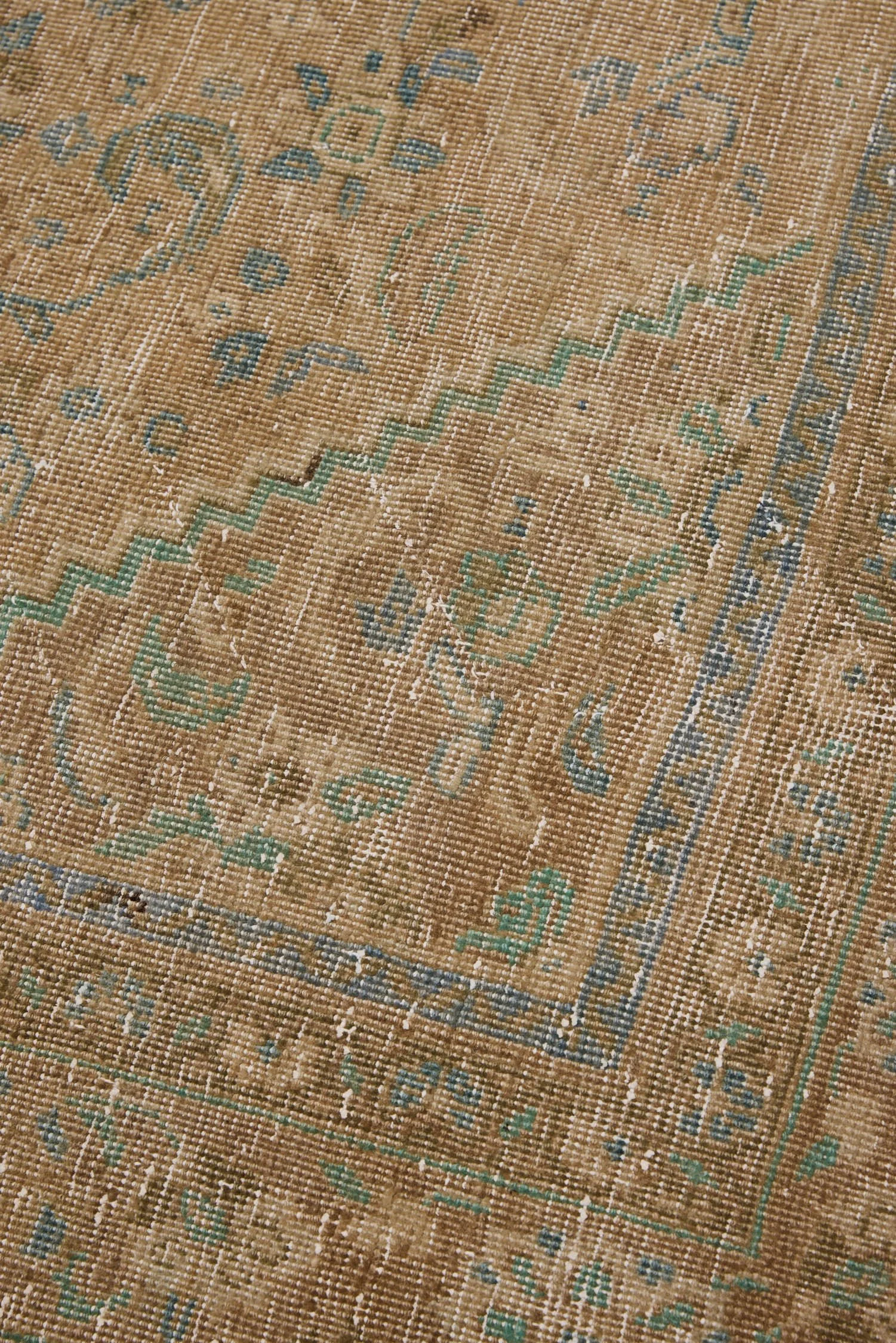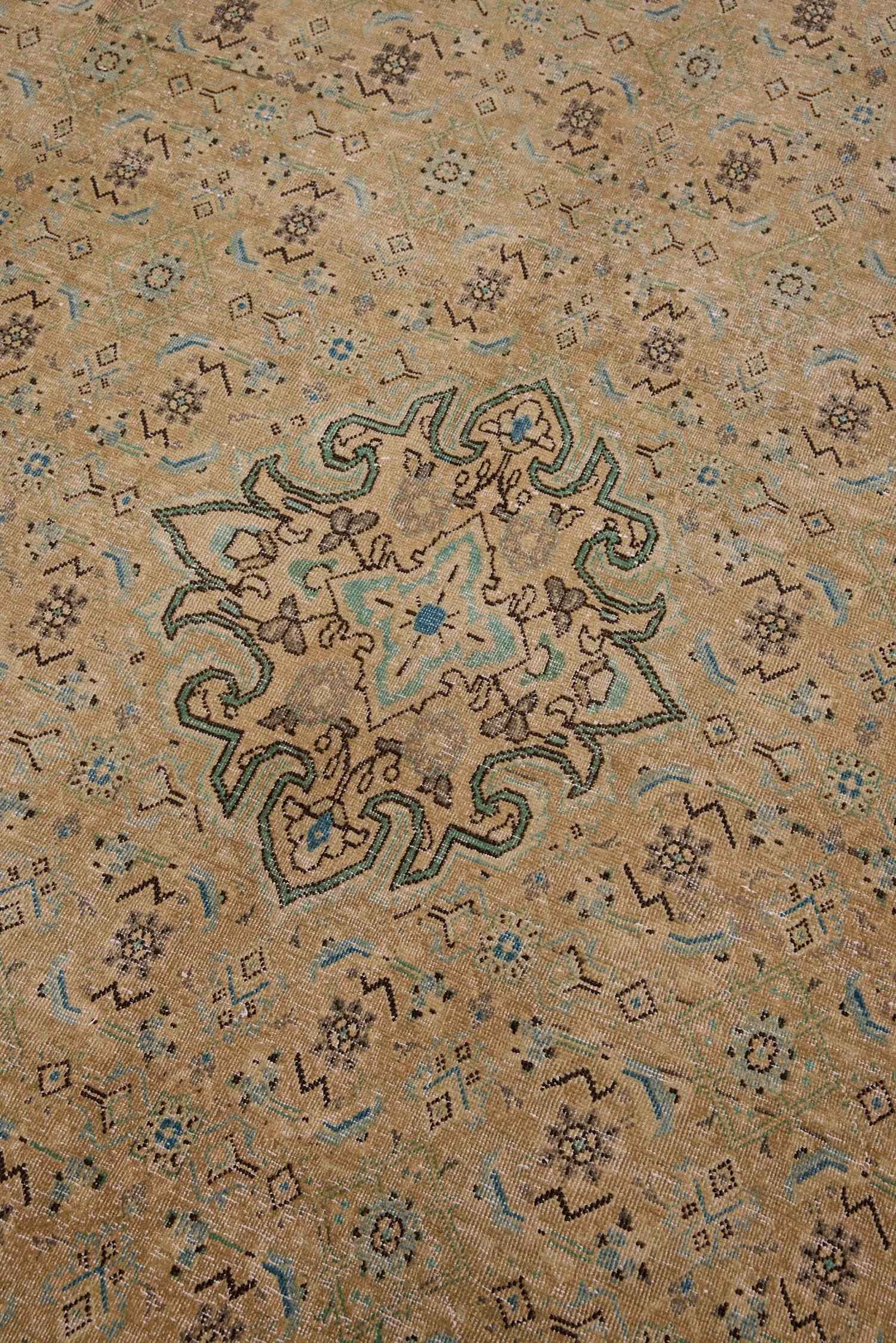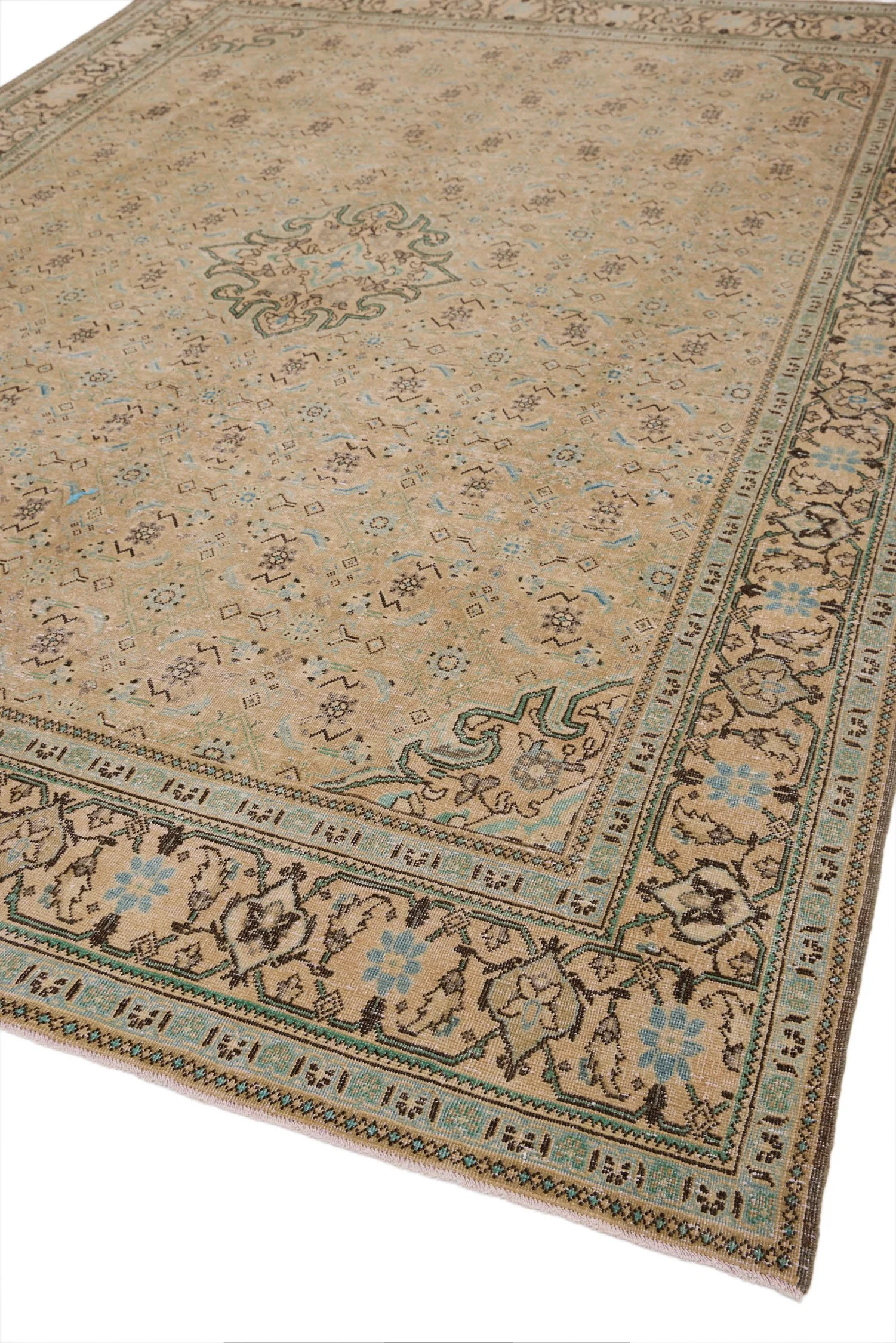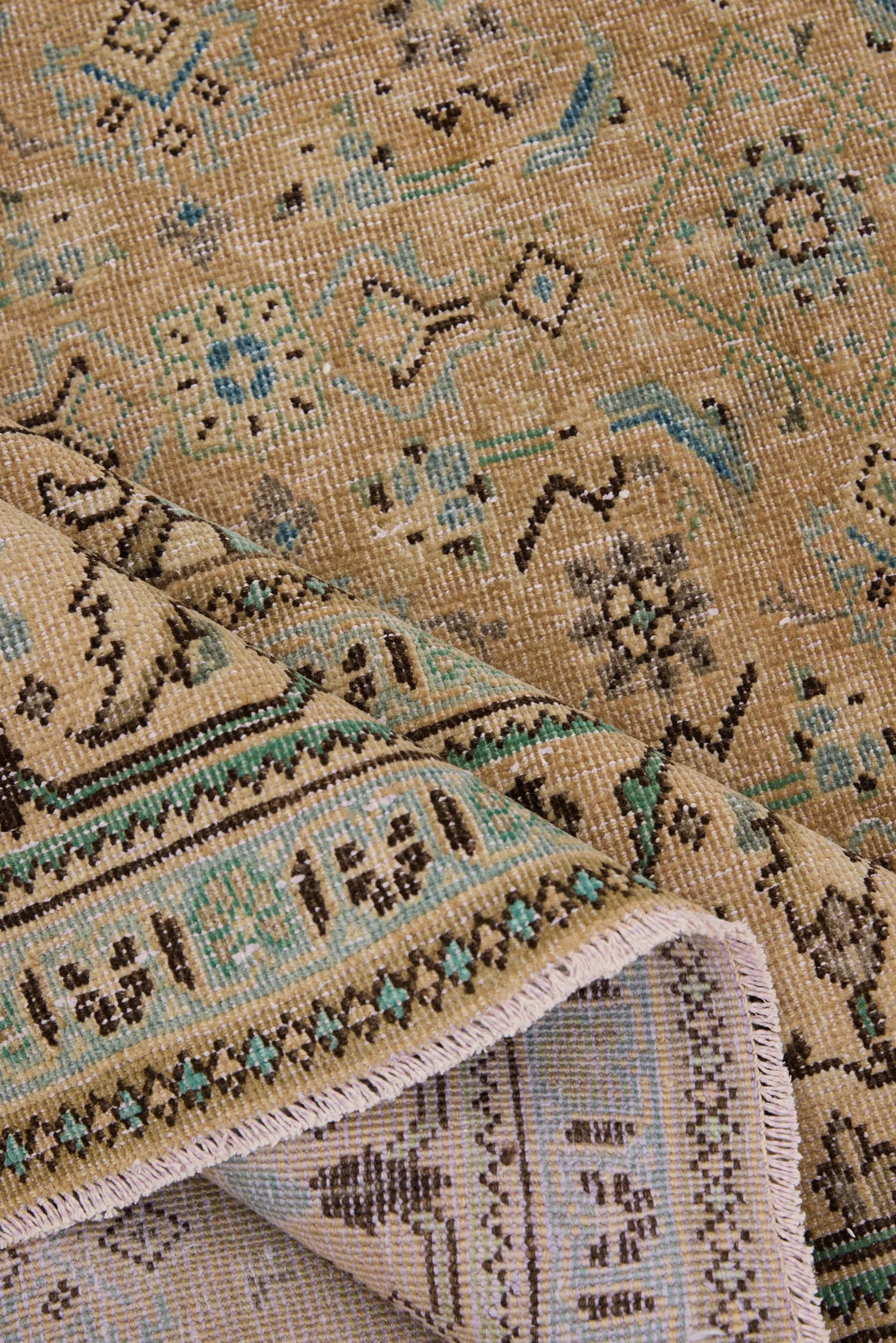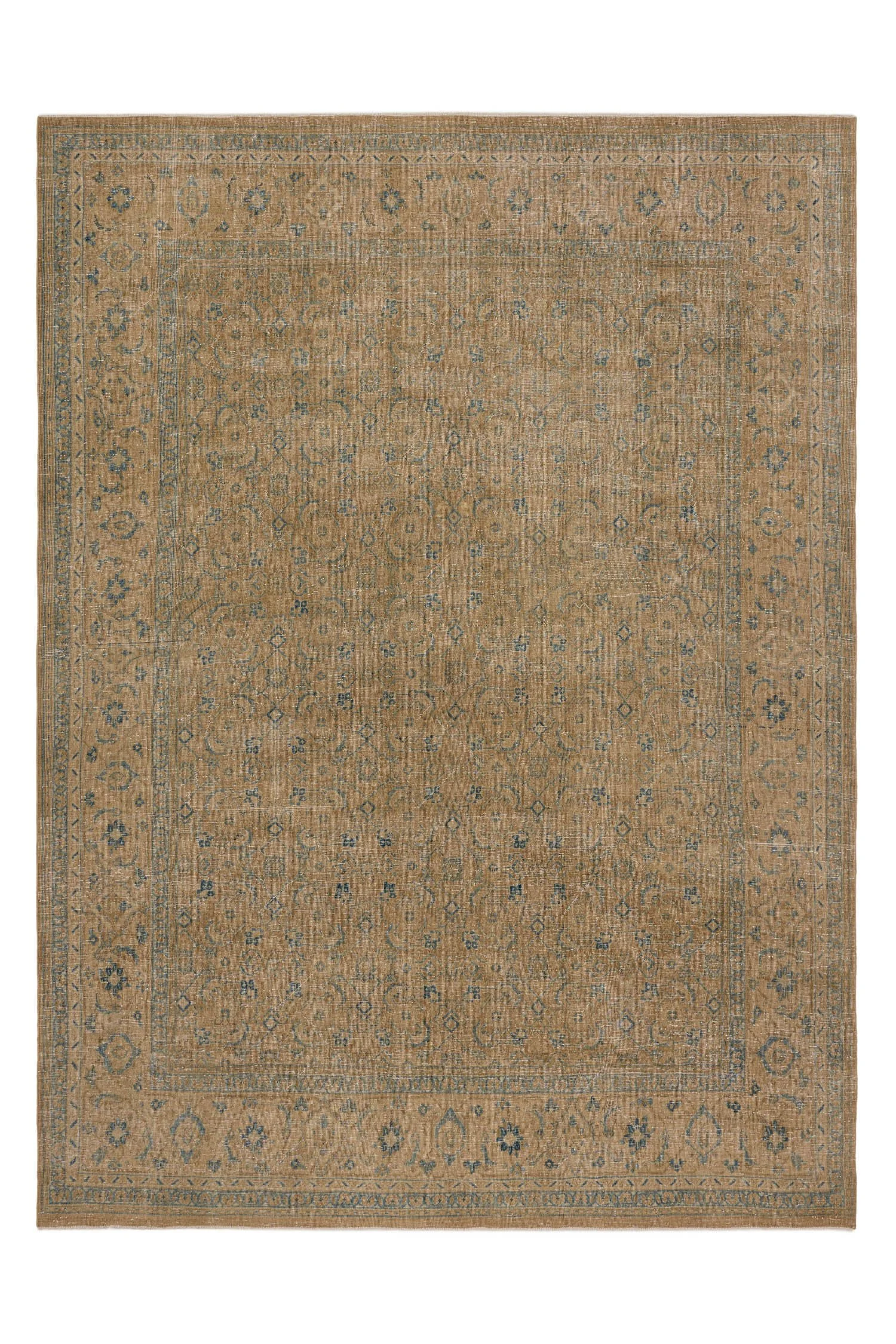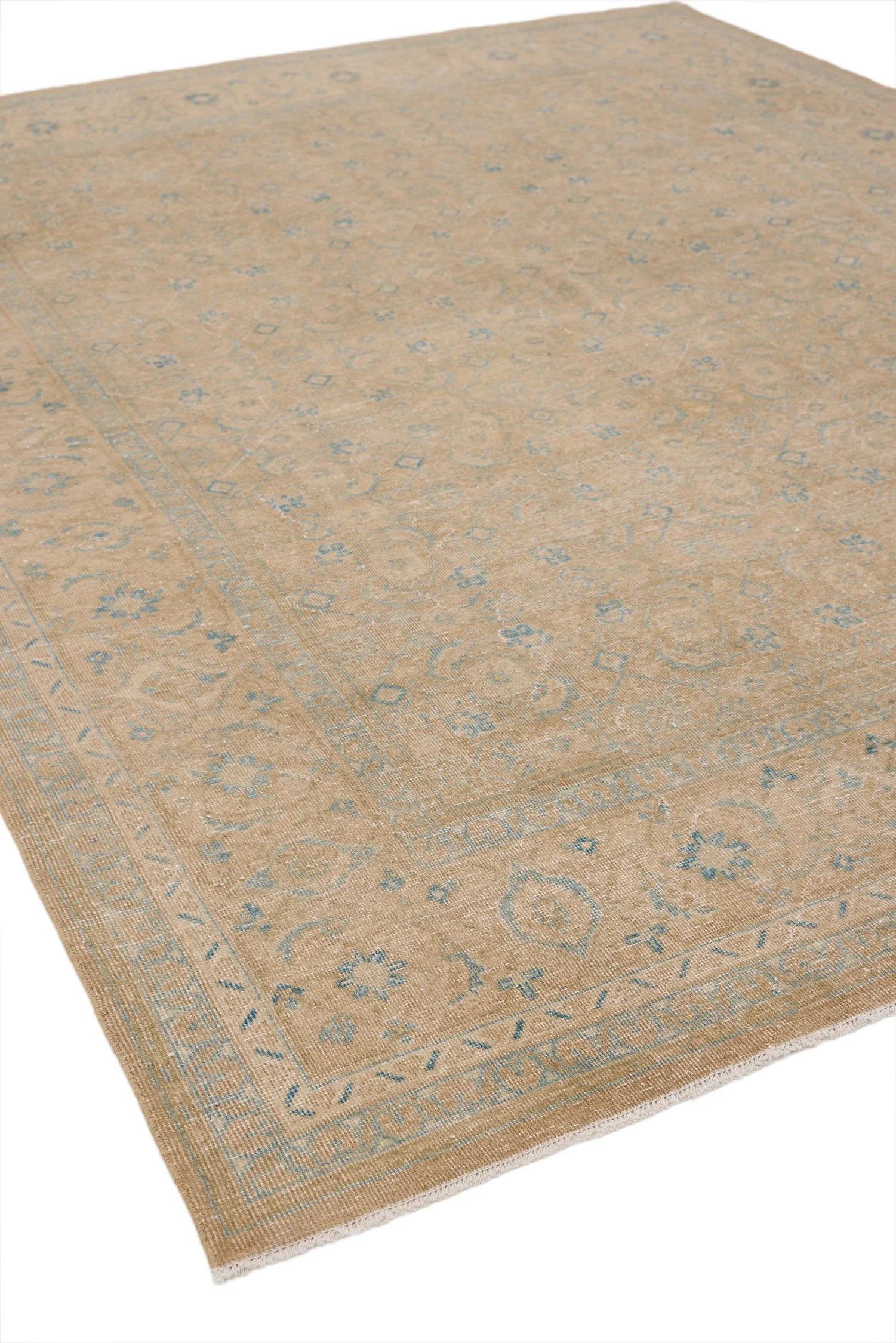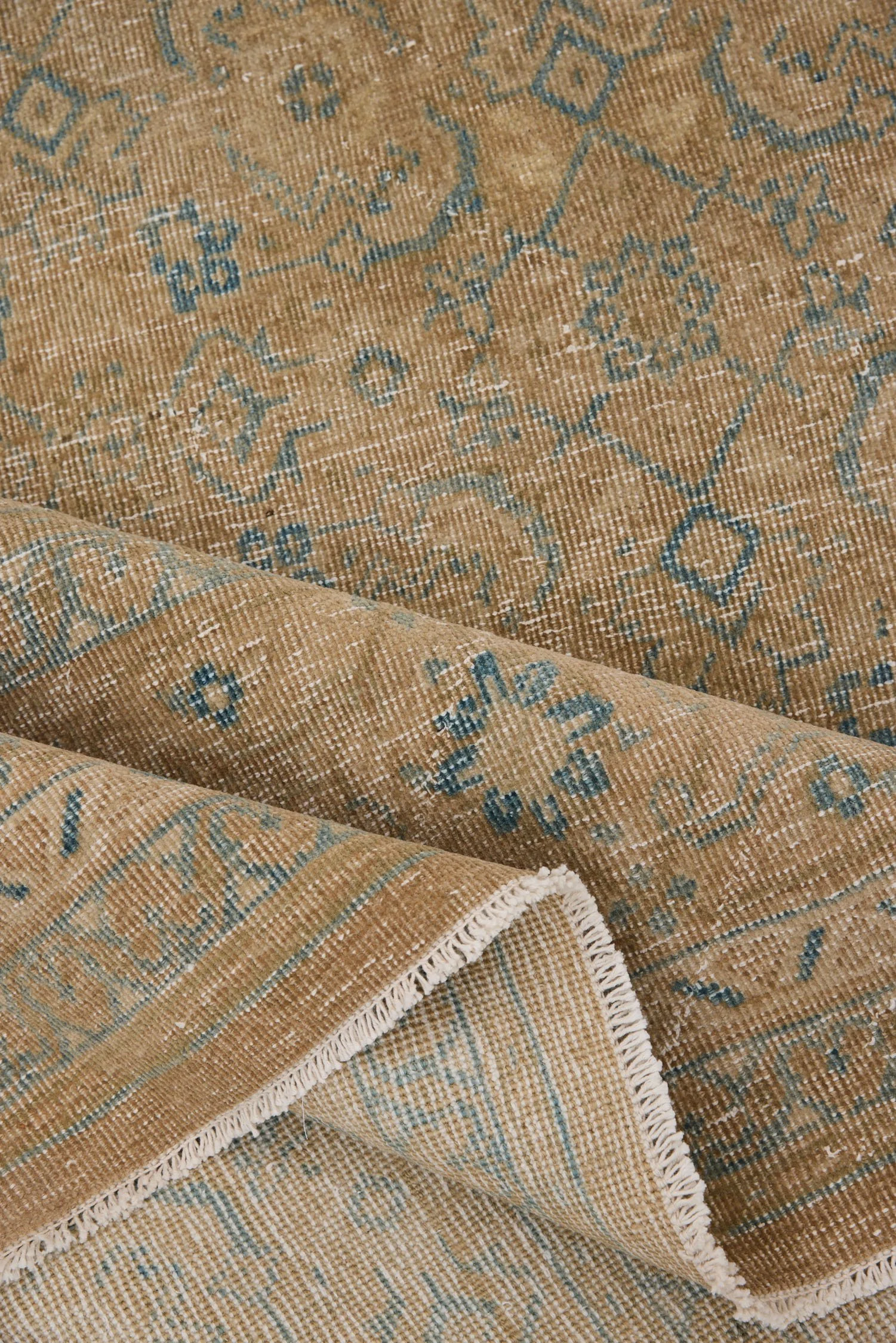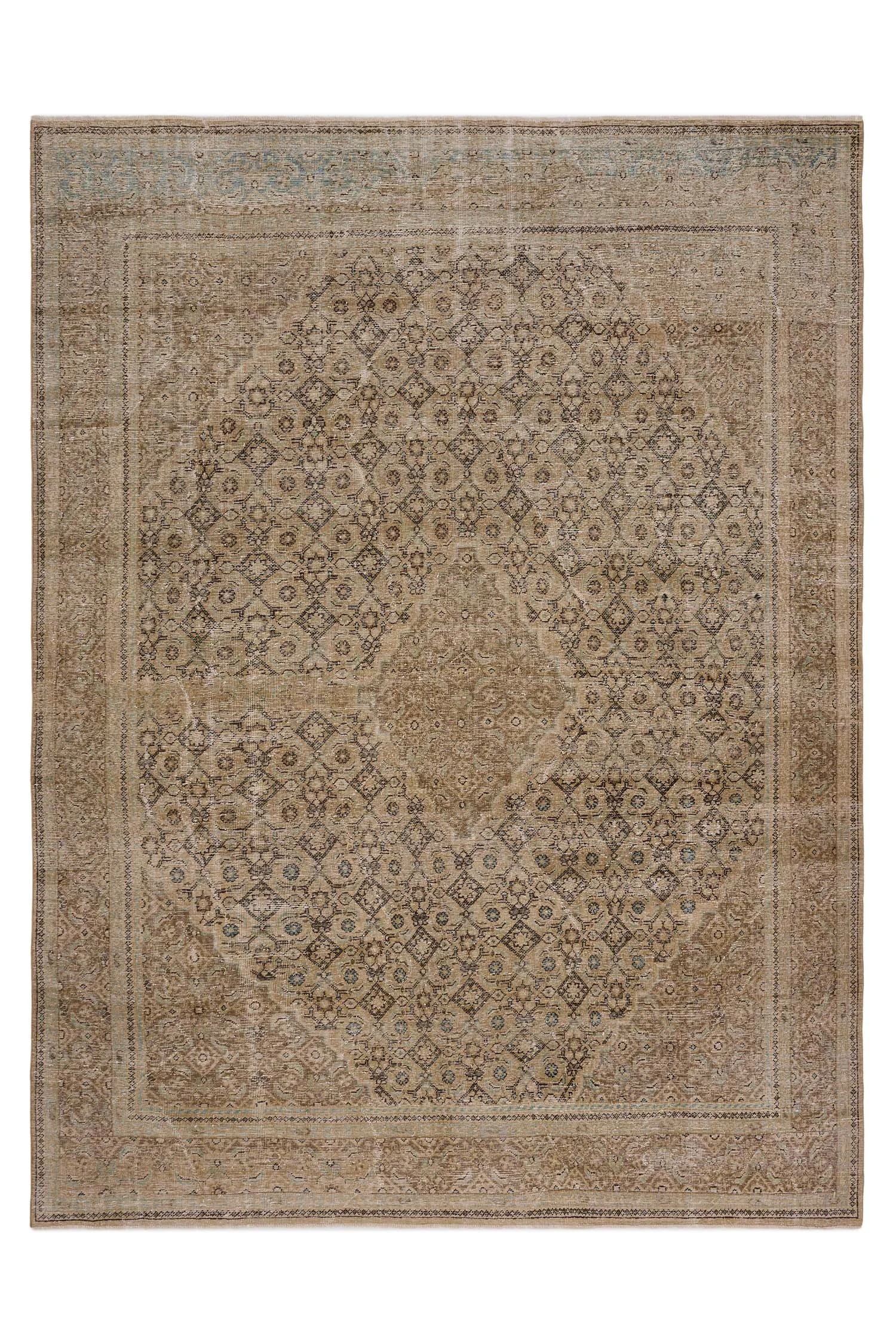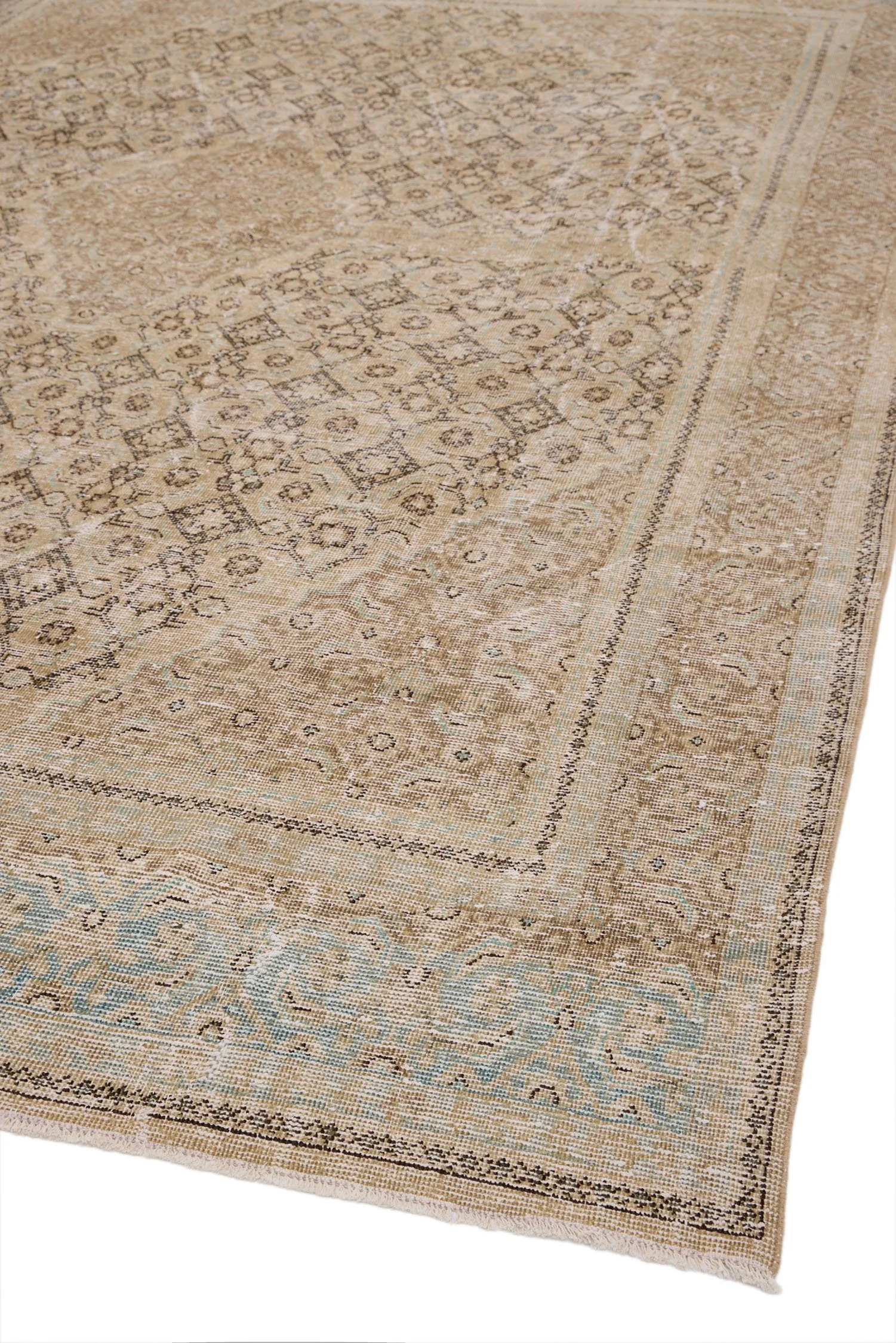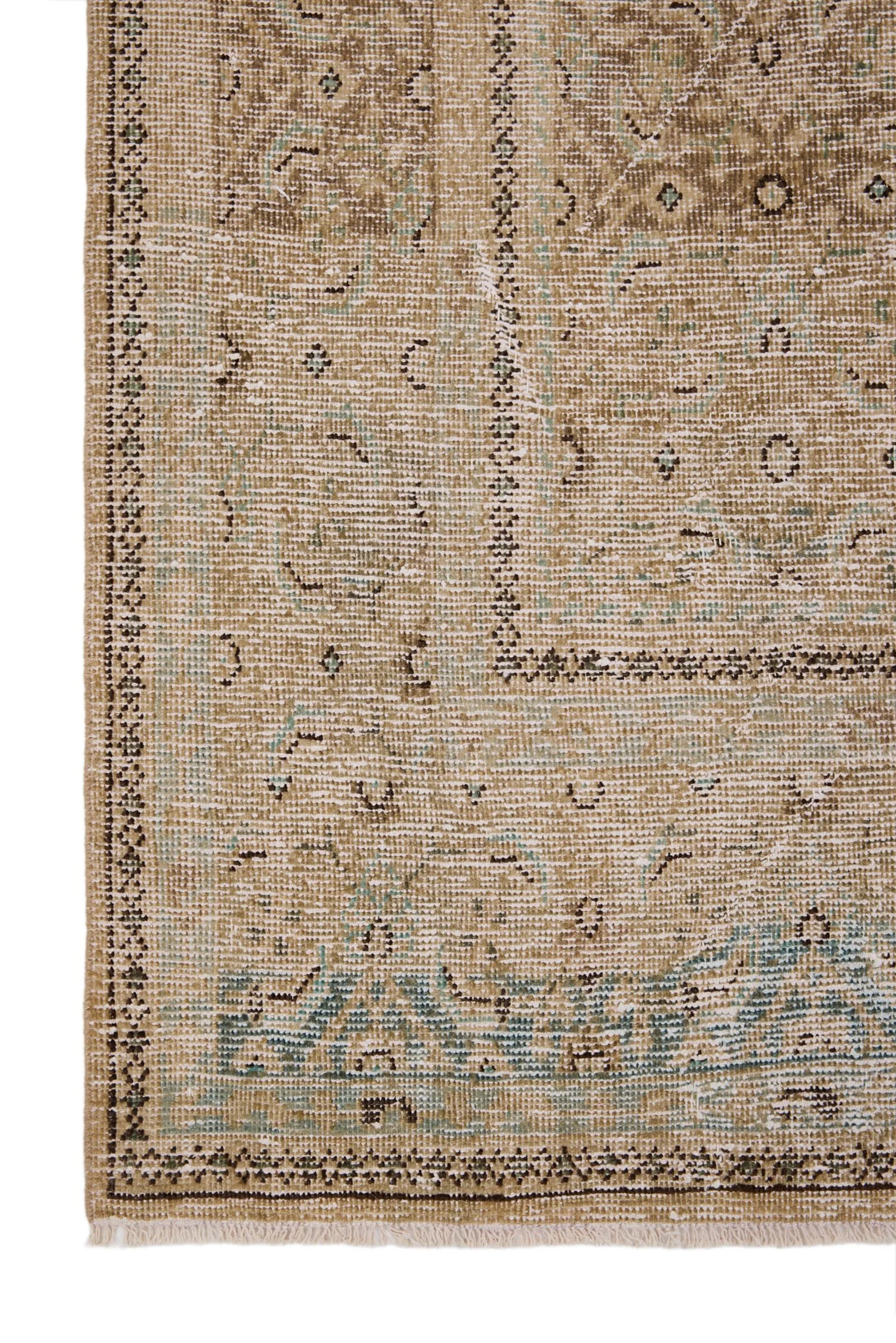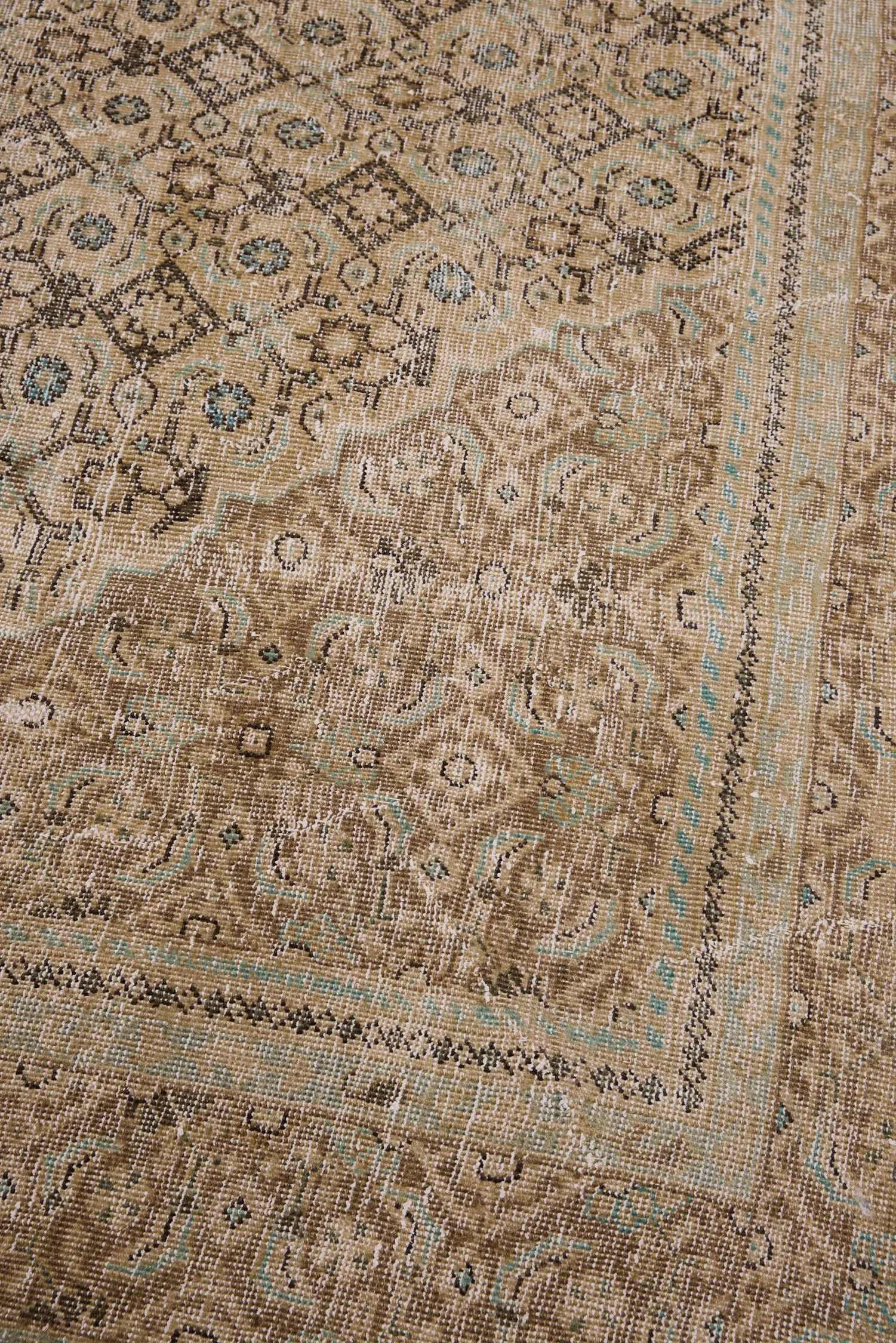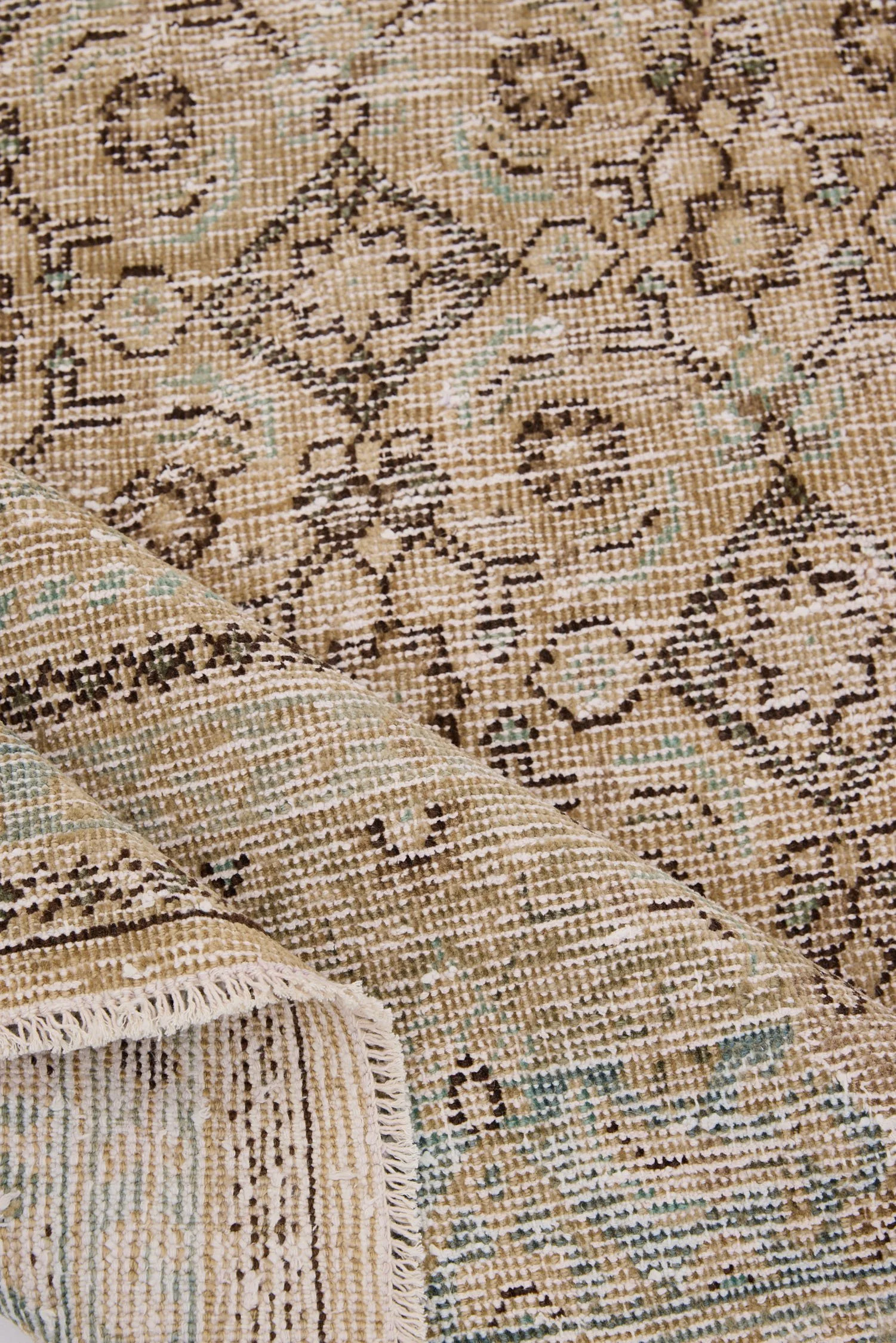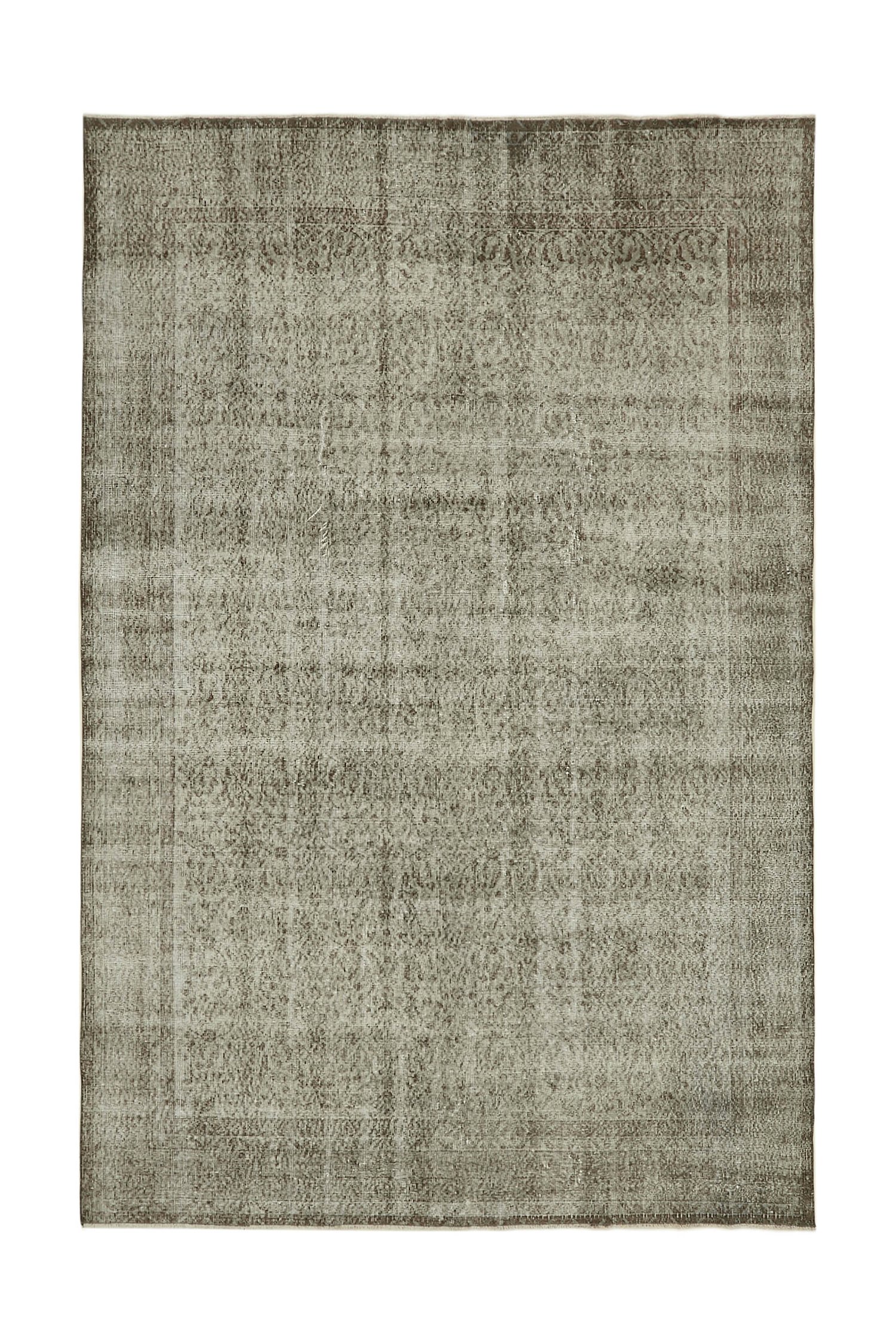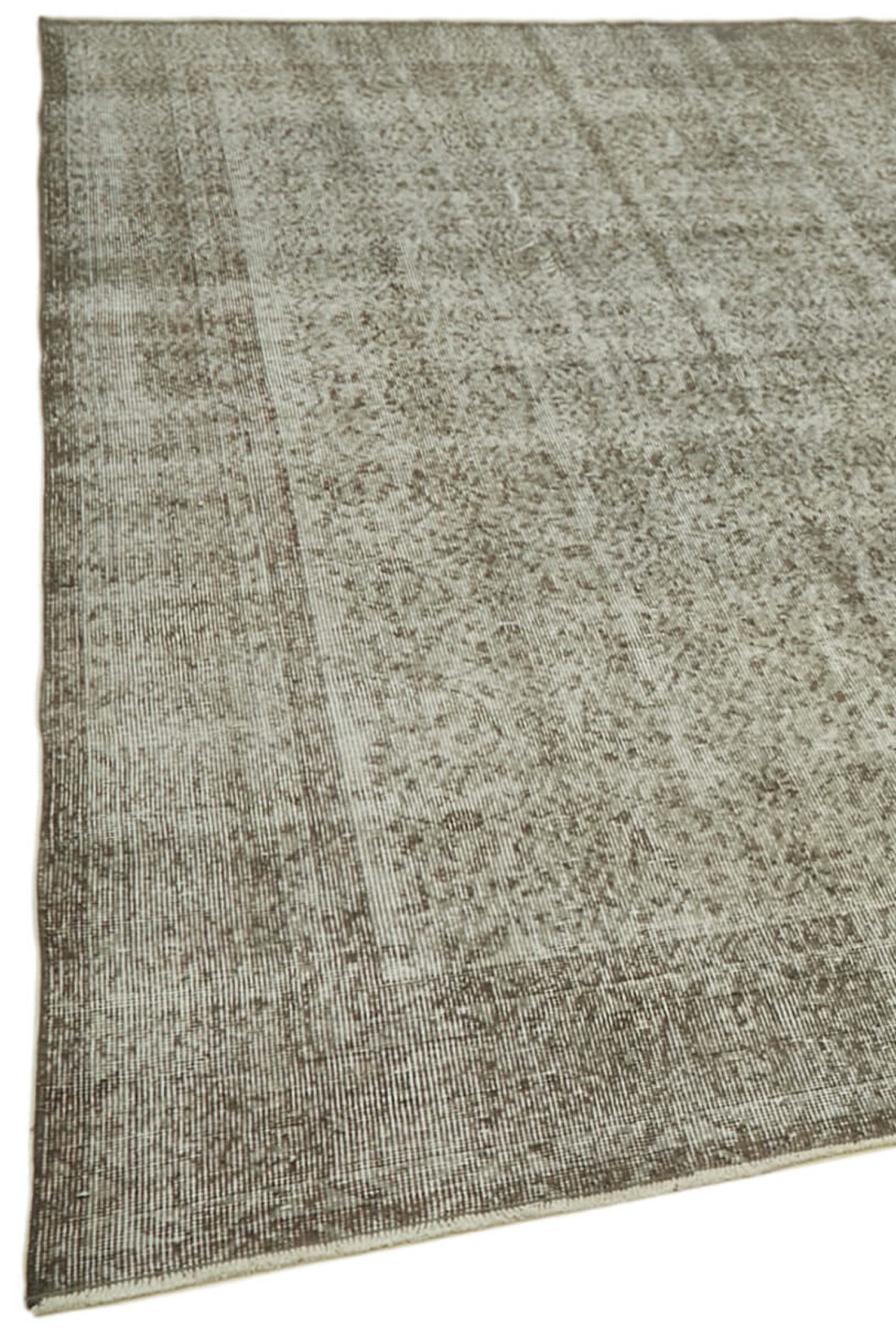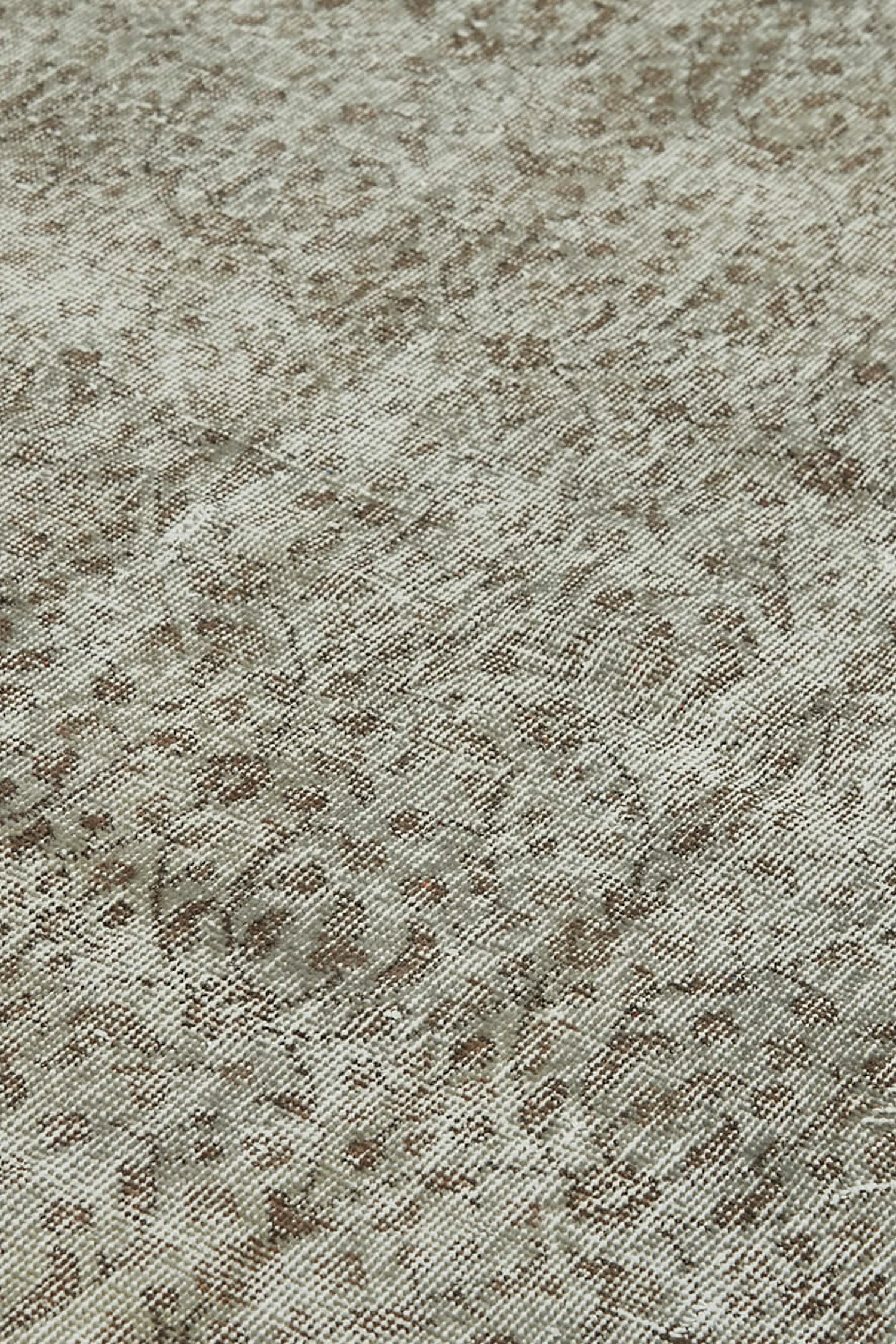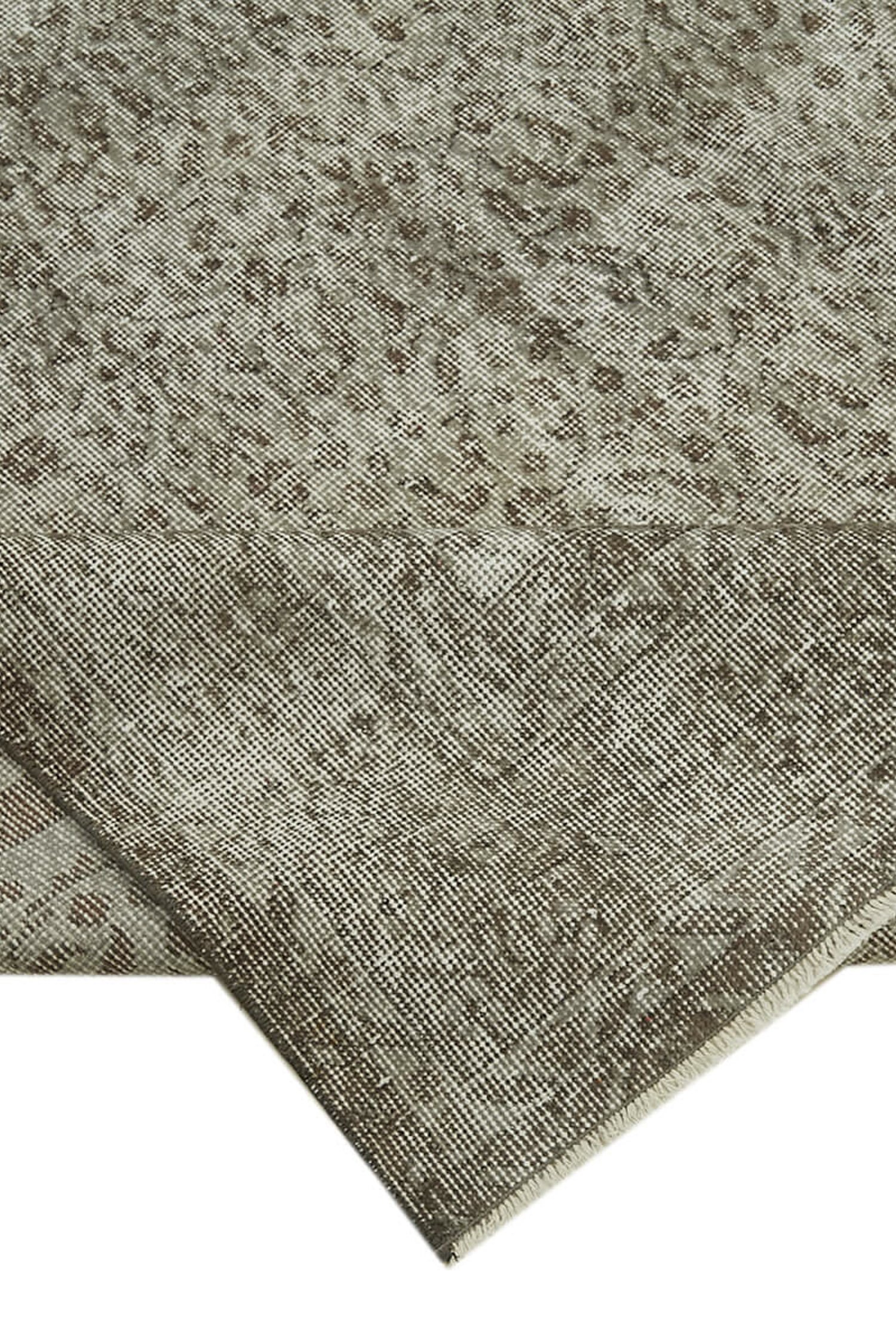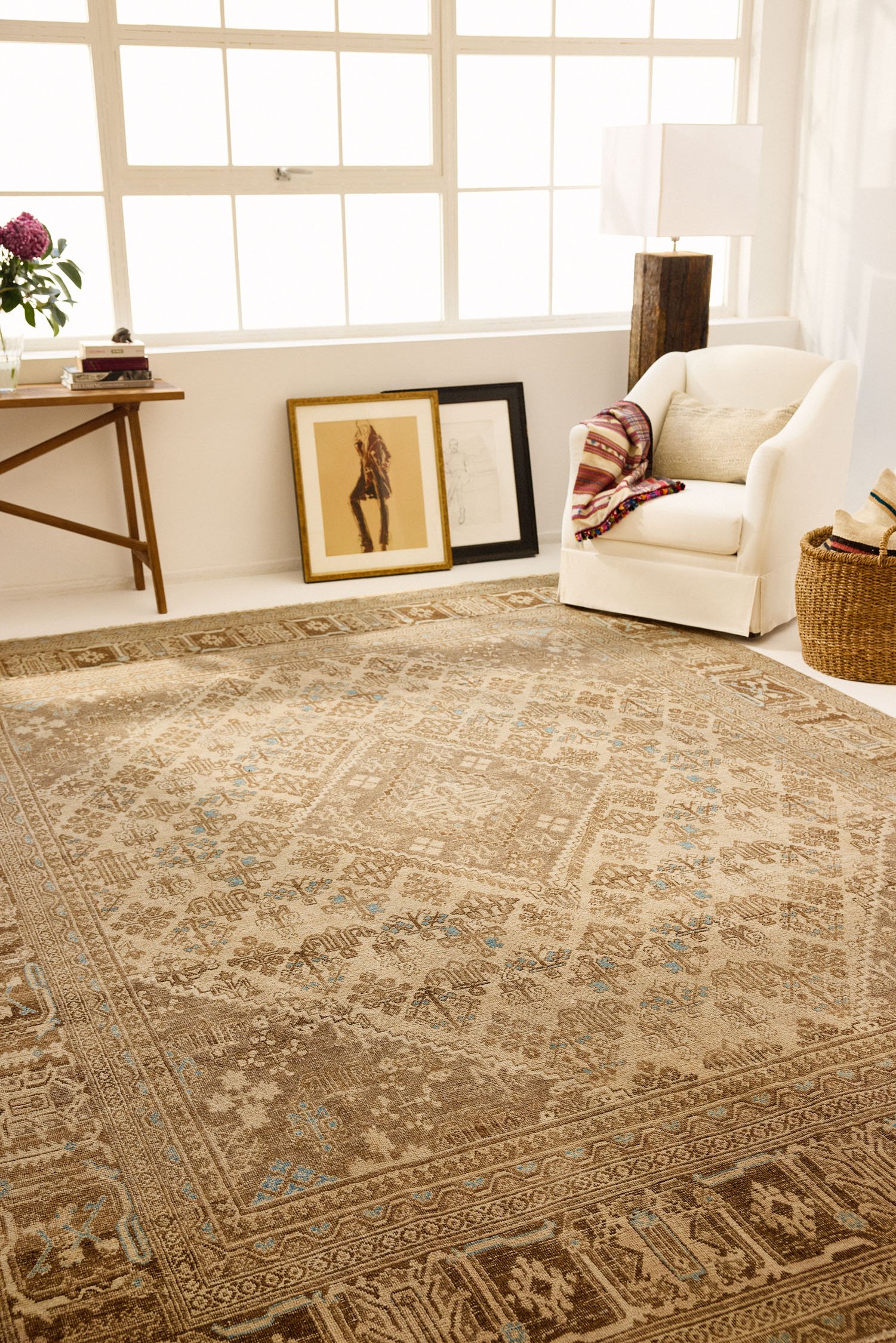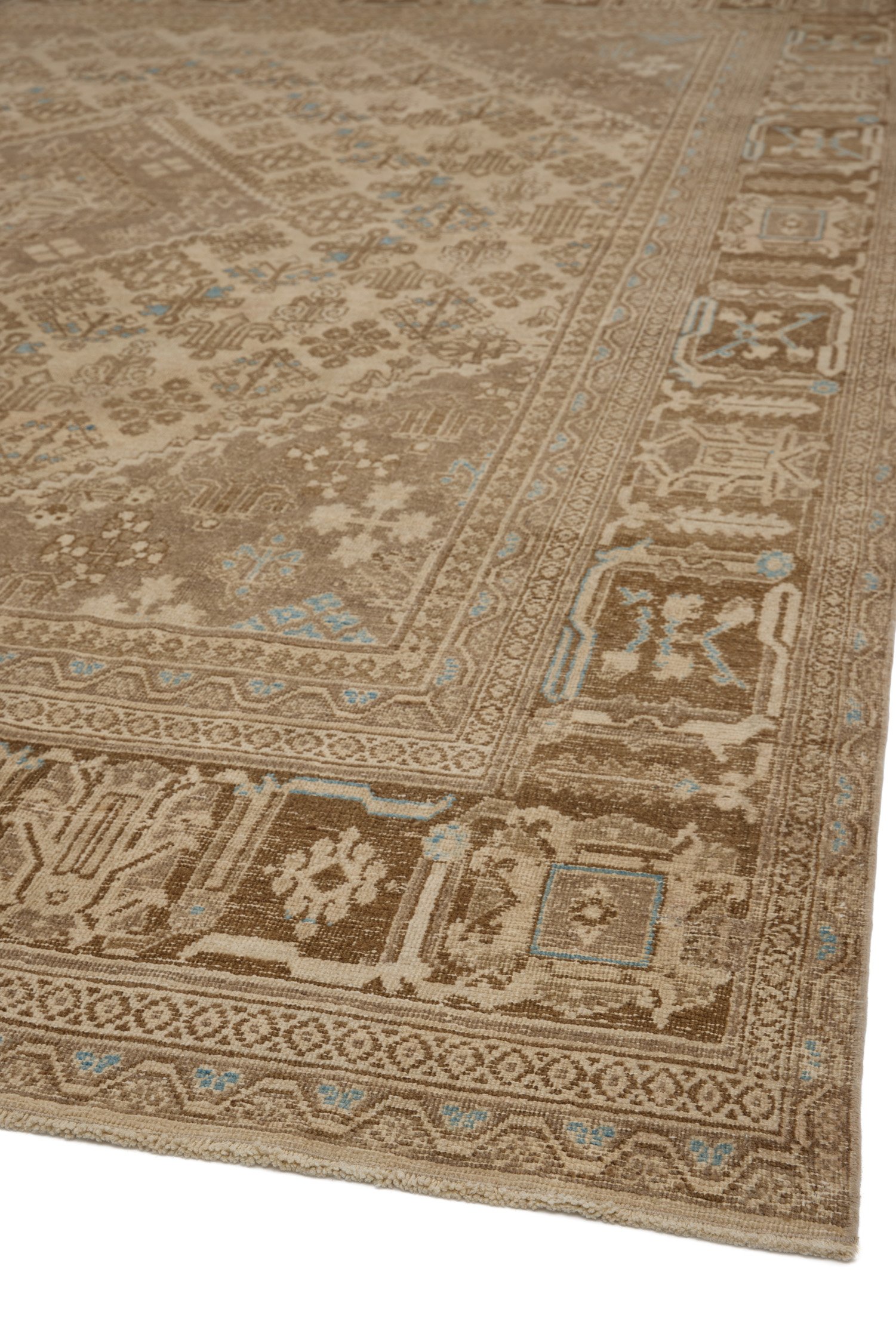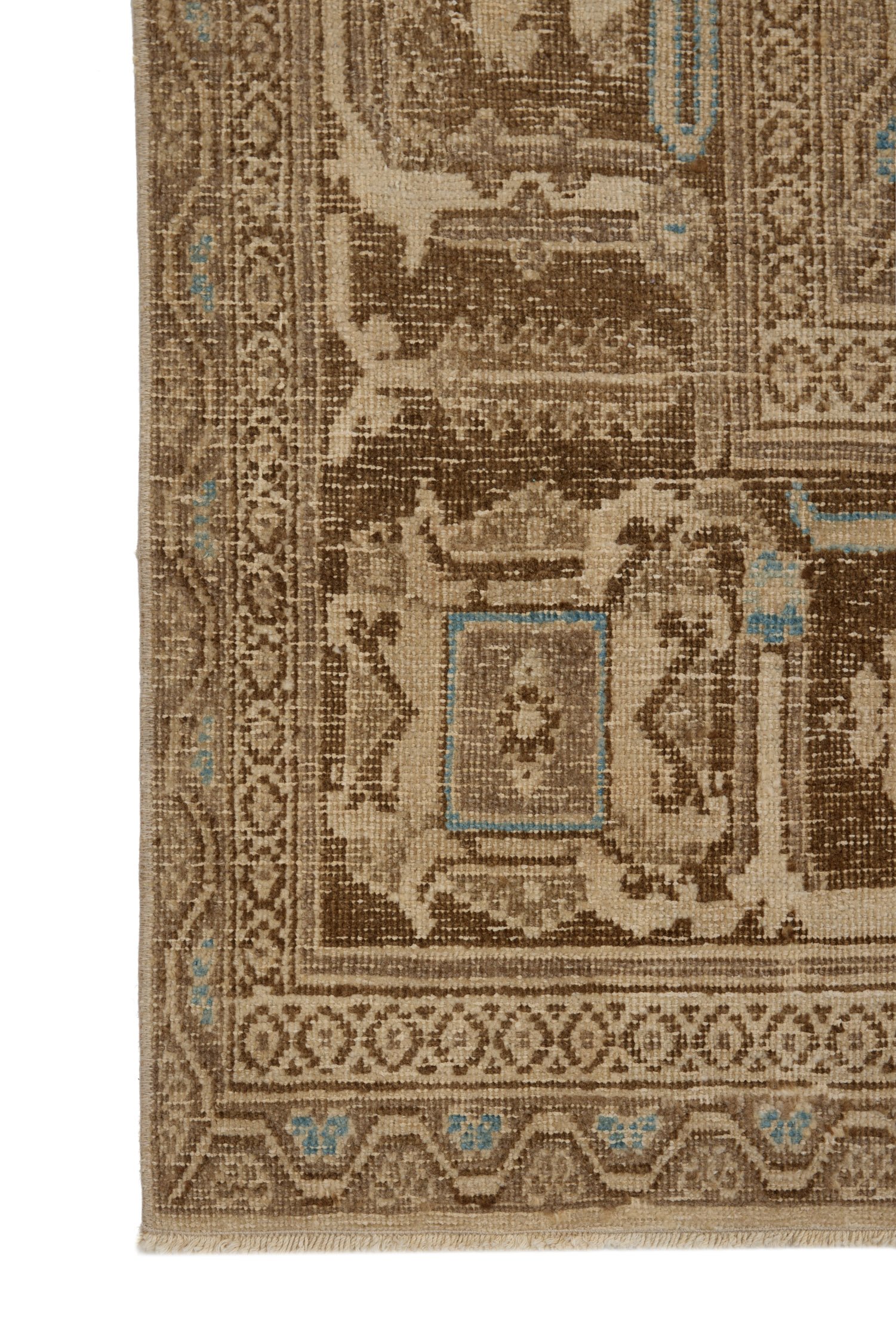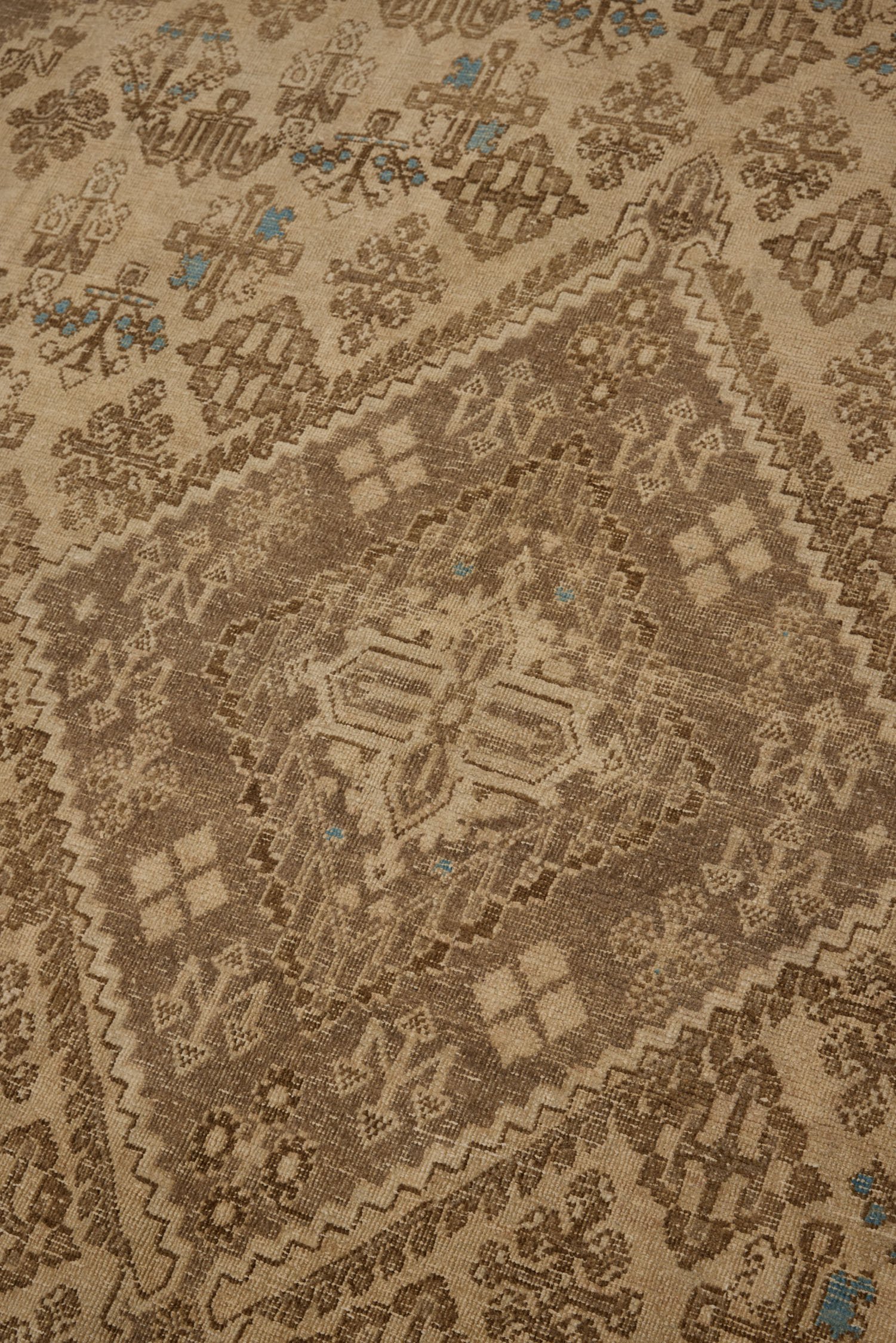Heritage and Craftsmanship
The Malayer region of western Persia produced rugs that balanced geometric precision with artistic freedom, weavers working with established design vocabularies while allowing room for personal interpretation. This approach resulted in pieces where structure and spontaneity coexist, each diamond medallion familiar yet distinct, each floral field following tradition while bearing the weaver's individual hand. The region's output during the mid-20th century shows this characteristic flexibility, rugs maintaining recognizable regional identity while exhibiting variation from piece to piece.
Design Elements
The diamond medallion anchors the composition with geometric clarity, its angular form providing a focal point that organizes the surrounding field without dominating it. Free-flowing florals spread across the ground, their organic quality contrasting with the medallion's structured geometry. Natural wear has blurred the boundaries between these elements, creating layered visual depth where pattern and patina inform each other. Teal highlights emerge from the distressed surface like memories surfacing, their intermittent presence adding visual interest without disrupting the overall restraint.
Placement
At 6'9" x 9'6", this rug works in living rooms, bedrooms, or dining spaces where moderate scale suits the architecture. The distressed quality and muted palette of taupe, sand, and teal allow it to integrate into interiors ranging from bohemian to refined minimalist. Its worn surface brings authenticity and texture to spaces that might otherwise feel too curated, the patina suggesting history and use rather than pristine preservation. The balanced proportions make it effective for defining seating areas or anchoring beds.
Care Recommendations
To preserve the rug's beauty:
Rotate periodically for even wear
Vacuum regularly using a suction-only setting
Address spills immediately by blotting, never rubbing
Professional cleaning recommended annually
Avoid direct sunlight to maintain color integrity
Distressed Malayer rugs appeal to those drawn to imperfection as a form of beauty, who recognize that worn surfaces carry stories about how objects have been valued and used across decades. The painterly quality created by natural wear works particularly well in contemporary interiors where hard edges and saturated colors might feel too assertive. These pieces offer pattern and history without formality, their softened surfaces inviting daily use rather than careful preservation.




